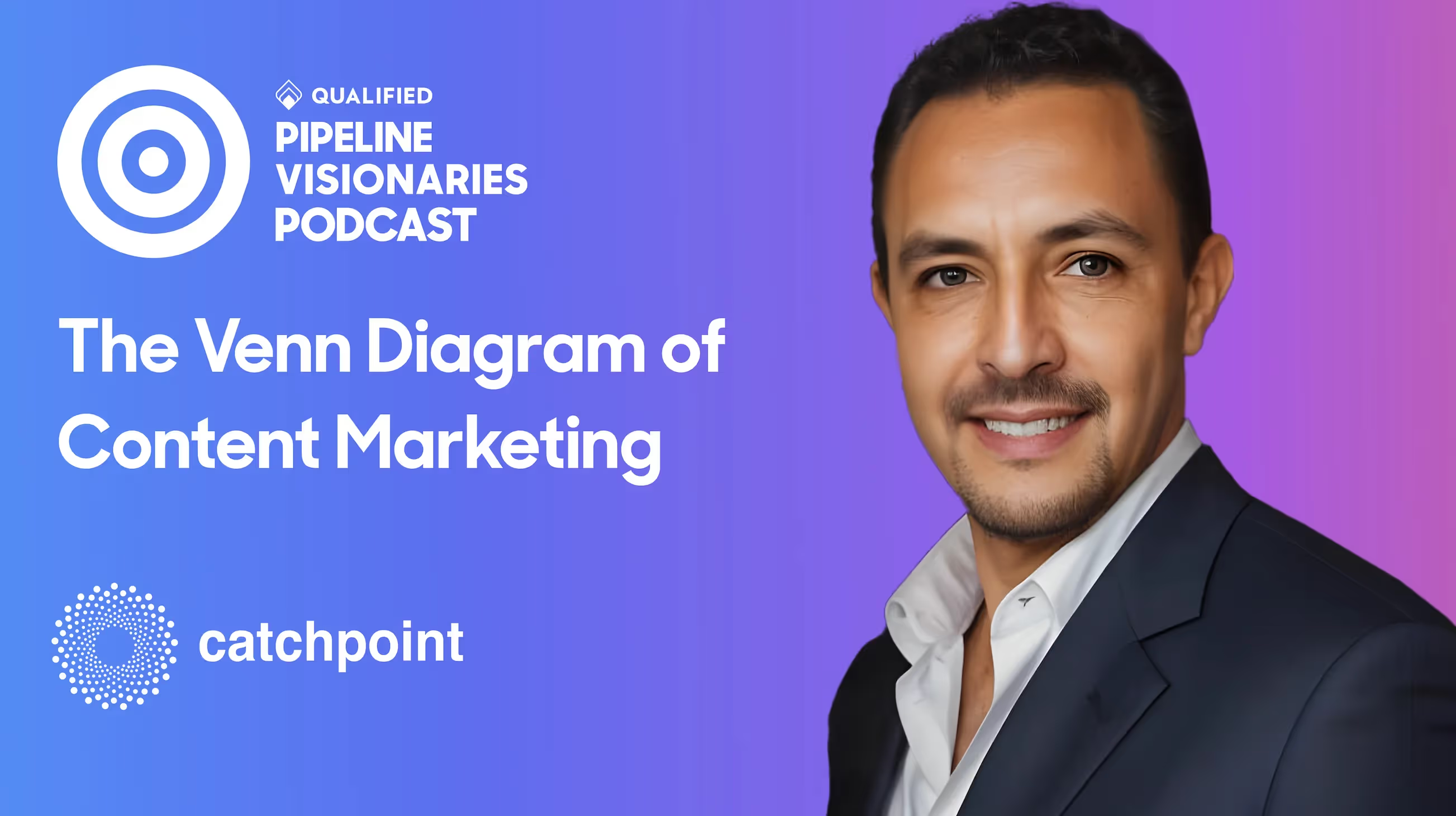The Venn Diagram of Content Marketing
Gerardo A Dada discusses his ungated content strategy and the Venn diagram of content marketing as well as sticking to your ICP.




Gerardo A Dada discusses his ungated content strategy and the Venn diagram of content marketing as well as sticking to your ICP.

This episode features an interview with Gerardo A Dada, CMO at Catchpoint, a company that top online retailers rely on to increase their internet resilience by catching issues in the internet stack before they impact business.
In this episode, Gerardo A Dada discusses his ungated content strategy and the Venn diagram of content marketing. He also shares his thoughts on sticking to your ICP and his strategy to only go after high-intent marketing leads.
Key Takeaways:
Stay up to date with weekly drops of fresh B2B marketing and sales content.
Gerardo A Dada discusses his ungated content strategy and the Venn diagram of content marketing as well as sticking to your ICP.


This episode features an interview with Gerardo A Dada, CMO at Catchpoint, a company that top online retailers rely on to increase their internet resilience by catching issues in the internet stack before they impact business.
In this episode, Gerardo A Dada discusses his ungated content strategy and the Venn diagram of content marketing. He also shares his thoughts on sticking to your ICP and his strategy to only go after high-intent marketing leads.
Key Takeaways:
Stay up to date with weekly drops of fresh B2B marketing and sales content.
Gerardo A Dada discusses his ungated content strategy and the Venn diagram of content marketing as well as sticking to your ICP.


This episode features an interview with Gerardo A Dada, CMO at Catchpoint, a company that top online retailers rely on to increase their internet resilience by catching issues in the internet stack before they impact business.
In this episode, Gerardo A Dada discusses his ungated content strategy and the Venn diagram of content marketing. He also shares his thoughts on sticking to your ICP and his strategy to only go after high-intent marketing leads.
Key Takeaways:
Stay up to date with weekly drops of fresh B2B marketing and sales content.
Gerardo A Dada discusses his ungated content strategy and the Venn diagram of content marketing as well as sticking to your ICP.



This episode features an interview with Gerardo A Dada, CMO at Catchpoint, a company that top online retailers rely on to increase their internet resilience by catching issues in the internet stack before they impact business.
In this episode, Gerardo A Dada discusses his ungated content strategy and the Venn diagram of content marketing. He also shares his thoughts on sticking to your ICP and his strategy to only go after high-intent marketing leads.
Key Takeaways:
Discover how we can help you convert more prospects into pipeline–right from your website.